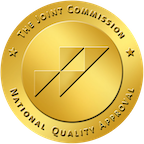Skip To Rehab Listing
With substance abuse treatment easily available, people struggling with drug and alcohol addiction can get help within their local area.
Substance Abuse Therapy Service Settings and Recovery Approaches In Carrizo Springs
The types of rehab centers in Carrizo Springs include the following: short term addiction treatment centers, long term drug and alcohol rehabs, outpatient day treatment, inpatient drug and alcohol rehabs, detoxification programs.
Individuals seeking treatment can find conveniently located centers close by with an array of recovery approaches designed for effective treatment. These techniques, which contain both long-established and recently developed approaches, can consist of the following: substance abuse counseling approach, matrix model, brief intervention approach, behavior modification, anger management, group therapy.
Programs Addressing Special Requirements for Addiction Treatment
Alcohol and drug abuse can differ based off of factors, such as the kind of drug causing the addiction. Many treatment centers in the Carrizo Springs region provide facilities purposed to customize rehab to a client's unique needs. These programs consist of the following: active duty military, persons with post-traumatic stress disorder, treatment for spanish-speaking clients, domestic violence, persons who have experienced sexual abuse, clients with HIV/AIDS.
Clients who are not sure what their needs are can contact these rehabs to obtain client services that can lead them toward the correct program.
Paying For Recovery - Payment Options & Alternatives
Individuals struggling with alcohol and drug abuse come from varied economic conditions, but a range of financing alternatives makes rehabilitation economically accessible for anyone. Funding options include the following: cash or self-payment, private insurance, payment assistance, medicare, medicaid, access to recovery (atr) voucher, other state funds.
Individuals searching for rehab can contact a rehab program to find out more about what financing alternatives are available to them.
Carrizo Springs, TX.'s drug and alcohol facilities, resources, and payment alternatives provide people who are struggling with alcohol and drug dependency an opportunity to begin a lasting recovery plan.
Commonly Asked Questions about Addiction and Treatment
What does fentanyl do to a person?
Fentanyl is a synthetic opioid pain reliever that is 50 to 100 times more potent than morphine. It's typically used to treat severe pain, especially after surgery, or to manage pain in individuals with chronic illnesses who have developed a tolerance to other opioids.
When used under medical supervision, fentanyl can effectively relieve pain. However, when used illicitly or without a prescription, it can have severe, and even fatal, effects. Here's what fentanyl can do to a person:
Physical Effects: In the short term, fentanyl can induce feelings of relaxation, euphoria, and decreased perception of pain. However, it also slows breathing and can lead to unconsciousness or death from respiratory failure, particularly in high doses or when combined with other substances that depress the central nervous system.
Dependency and Addiction: Fentanyl is highly addictive. Regular use can lead to physical dependence, where the body requires the drug to function normally, and psychological addiction, where a person feels a compulsive need to use the drug despite its harmful consequences.
Overdose Risk: Due to its potency, the risk of overdose with fentanyl is high, especially if a person mistakenly believes they're taking a less potent opioid, as illicit fentanyl is often mixed with other drugs. Overdose can lead to severe respiratory depression, unconsciousness, and death.
Withdrawal: Once a person becomes dependent on fentanyl, stopping its use can result in withdrawal symptoms. These can include muscle and bone pain, sleep problems, diarrhea, vomiting, cold flashes, and uncontrollable leg movements.
Long-Term Health Effects: Chronic fentanyl use can lead to an array of health problems, including severe constipation, increased sensitivity to pain, confusion, depression, and increased risk of infections due to needle sharing (if injected).
Due to its potency and high risk of overdose, non-medical use of fentanyl is extremely dangerous. If you or someone you know is struggling with fentanyl or other opioid use, it's crucial to seek professional help immediately.
What is a typical day like in an inpatient drug rehab?
Inpatient drug rehab provides a structured environment for individuals recovering from substance use disorders. The specific details of a typical day can vary between facilities, but most will follow a general schedule that includes therapeutic activities, meals, free time, and sleep. Here's a rough outline of what a day in an inpatient rehab might look like:
Morning:
- Wake Up: Residents typically wake up early to start their day. Some facilities may offer morning activities like yoga or meditation to help residents start their day in a calm and mindful way.
- Breakfast: A healthy meal is provided to start the day. This is also a time for social interaction with other residents.
- Group Therapy or Counseling: After breakfast, residents often participate in a group therapy session. This could be a general therapy session or a specific type of therapy such as Cognitive Behavioral Therapy (CBT) or Dialectical Behavior Therapy (DBT).
Afternoon:
- Lunch: After morning therapy sessions, residents will have lunch, often followed by a short break.
- Therapies: The afternoon is typically filled with various therapeutic activities. These could include individual counseling, specialized therapies (like art or music therapy), or educational sessions about addiction and recovery.
Evening:
- Dinner: In the evening, residents will have dinner, which, like all meals in rehab, is typically designed to promote overall health and wellness.
- Evening Group Session: Many rehab centers host an evening group session, which might be a support group, a 12-step meeting, or another form of group therapy.
- Free Time: After the day's structured activities, residents usually have some free time. They might use this time to relax, read, journal, or socialize with other residents.
- Bedtime: To ensure adequate rest, lights-out times are typically enforced.
Throughout the day, residents may also have scheduled times for medication (if applicable), physical exercise, and meeting with their treatment team. The goal of this structured daily routine is to provide a stable, supportive environment that promotes healing and recovery.
It's important to note that the exact schedule and types of activities will vary between different rehab centers and individual treatment plans. When choosing a rehab center, it can be helpful to ask about the daily schedule and types of therapies offered to ensure it aligns with your needs and preferences.
Can I successfully get treatment for my addiction to alcohol on an outpatient basis?
"Yes, it is possible to successfully receive treatment for alcohol addiction on an outpatient basis. Outpatient treatment programs can be an effective and flexible option for individuals who cannot commit to inpatient or residential programs due to work, family, or other responsibilities. However, the success of outpatient treatment largely depends on the individual's motivation, support system, and the severity of their addiction. While outpatient treatment can be successful for many individuals, it may not be suitable for everyone. Those with severe alcohol addiction, a history of relapse, or co-occurring mental health disorders may require more intensive inpatient or residential treatment to ensure their safety and promote lasting recovery.
Ultimately, the success of outpatient treatment for alcohol addiction depends on the individual's commitment, the support of their family and friends, and the quality of the treatment program. It is essential to choose a reputable and evidence-based outpatient program and to be fully engaged in the recovery process for the best possible outcome."













